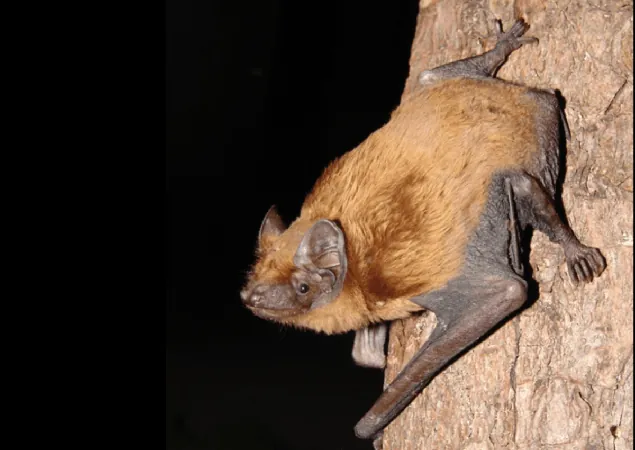
Unraveling the Mystery: How Female Bats Conquer 1,600km Migrations, Defying Dangerous Storms!
2025-01-05
Author: Wei Ling
Introduction
For years, the migration patterns of common noctule bats remained a mystery beneath the radar of scientific scrutiny, vastly overshadowed by studies on bird migrations. However, groundbreaking research from the Max Planck Institute of Animal Behavior has unveiled astonishing insights into the hazardous journeys these tiny female bats undertake—covering a staggering 1,600 kilometers!
The Research Process
Every spring for the past three years, researchers have fitted these bats with innovative sensory tags in Switzerland. Located snugly between the bats' shoulder blades, these state-of-the-art devices transmit long-range data, providing a wealth of information—including 1,440 daily sensor measurements that track the bats' activities and their environmental temperatures. This has transformed our understanding of their seasonal migrations to summer roosts in northern Europe, where they mate and raise their young.
Unique Migration Patterns
Interestingly, it's primarily female bats that embark on these long migrations, while the males generally remain in their established territories. During the winter months, they hibernate in sheltered tree hollows, either alone or in groups. Timm Wild, who spearheaded the development of the ICARUS-TinyFoxBatt tag, explains, “The tags communicate with us from wherever the bats are—similar to how a cellphone works across Europe.”
Flight Dynamics and Exploration
Unlike migratory birds that follow defined routes, researchers discovered that bats do not adhere to a set migration corridor. Dina Dechmann from MPI-AB noted, “We had assumed that bats were following a unified path, but we now see they’re moving all over the landscape in a general northeast direction.”
Endurance and Feeding Habits
In a remarkable display of endurance, these bats can fly up to 400 kilometers in a single night—a new record for the species. However, unlike birds that often bulk up for migration by gaining weight, bats have a unique ‘hopping’ migration pattern, relying on nightly refueling stops for sustenance.
Adapting to Weather Challenges
The researchers made an astonishing discovery while analyzing flight data. They noticed bursts of bats exiting their roosts en masse—these “bat fireworks” occurred specifically when weather conditions worsened. This behavior revealed a significant adaptation: the bats took flight right before storms hit. “They were riding storm fronts, using the buoyancy of warm tailwinds,” explains Edward Hurme, the leading postdoctoral researcher on the project. The bats effectively conserved energy by flying ahead of the storms, catching the warm air waves.
Conservation Implications
The implications of this research extend beyond just understanding bat behavior; it may lead to crucial conservation efforts. While common noctule bats are not currently endangered, their populations face significant challenges due to habitat loss and modern hazards like wind turbines. One potential outcome of this study could see wind farms implementing safer practices, such as temporarily shutting down turbines when bat migrations are expected, especially before storm conditions.
Conclusion
This newfound knowledge not only helps protect these incredible creatures but also highlights the intricate relationship between wildlife behavior and environmental changes—possibilities for further study abound! As we continue to unearth the mysteries of nature, the resilience of these tiny mammals offers hope in an increasingly unpredictable world.


 Brasil (PT)
Brasil (PT)
 Canada (EN)
Canada (EN)
 Chile (ES)
Chile (ES)
 Česko (CS)
Česko (CS)
 대한민국 (KO)
대한민국 (KO)
 España (ES)
España (ES)
 France (FR)
France (FR)
 Hong Kong (EN)
Hong Kong (EN)
 Italia (IT)
Italia (IT)
 日本 (JA)
日本 (JA)
 Magyarország (HU)
Magyarország (HU)
 Norge (NO)
Norge (NO)
 Polska (PL)
Polska (PL)
 Schweiz (DE)
Schweiz (DE)
 Singapore (EN)
Singapore (EN)
 Sverige (SV)
Sverige (SV)
 Suomi (FI)
Suomi (FI)
 Türkiye (TR)
Türkiye (TR)
 الإمارات العربية المتحدة (AR)
الإمارات العربية المتحدة (AR)